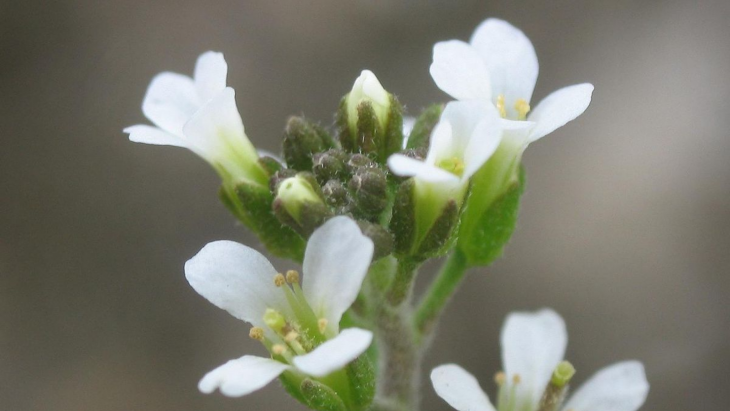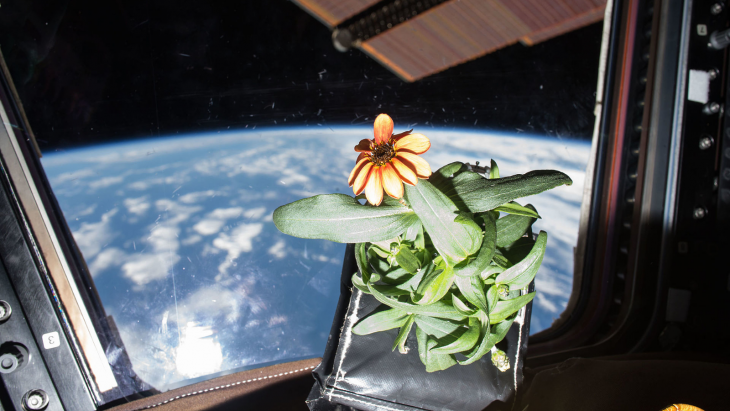How can astronauts grow plants in space, or farm on Mars? This is the subject of much ongoing research, and one study found that activating a key cellular process using red light may be a big part of the answer.
Because plants can’t move around the way animals can, they have to be very flexible and adaptive to stressful changes in their environment. Plants are particularly stressed by cold, darkness and lack of gravity, all of which occur in space. In previous research, plants grown in the dark on the International Space Station (ISS) showed a decrease in cell growth compared to control plants.
Within each plant cell, some processes are more sensitive to stress than others. One of the most sensitive and essential cellular processes is ribosome biogenesis, or ribosome formation. Ribosomes are multi-protein complexes which translate genes into proteins. One plant cell can have over a million ribosomes, all functioning at the same time to produce the proteins needed for cell growth and survival.
Ribosome biogenesis is extremely sensitive to stress because it is the most complex process in the cell. The process is finely tuned and intricately controlled, and requires hundreds of helper proteins to generate, process, move and assemble the different parts of the ribosome. One key helper protein is known as nucleolin, a protein involved in ribosome assembly. Arabidopsis plants, which are commonly used in plant research, have two genes encoding the nucleolin protein: NUC1 and NUC2.

Arabidopsis thaliana, Source: Wikimedia Commons
Ribosome biogenesis is activated when the plant is exposed to light, from the sun or an artificial light source. When plants receive light from the sun, they are getting approximately equal levels of red, blue and green light. We know that plants don’t absorb much green light, because the green light bounces off the leaves and stems and makes the plants appear green to our eyes. Plants mostly absorb blue and red light. Blue light is important for chlorophyll production, which gives plants strong stems and leaves. Red light, however, is important for plant growth, flowering, and fruiting. In particular, red light activates ribosome biogenesis within each plant cell.
Previous research on the ISS showed that Arabidopsis plants grown in red light were more resilient to the stress of spaceflight. Therefore, a group of researchers from Spain, France and the USA thought that red light exposure might reverse the destructive effects of spaceflight stress on plants through the activation of ribosome biogenesis. They also wanted to see which nucleolin gene, NUC1 or NUC2, was more important for combating the stress response.
In order to study these genes, they created Arabidopsis plants with a non-functioning, mutant, version of either NUC1 or NUC2, as well as control plants with normal versions of both genes. All three groups of plants were then subjected to either 2 days of red light or 2 days of darkness.
Under red light, the NUC1-mutant plants were able to perform ribosome biogenesis better than the NUC2-mutant plants. This means that the NUC2 gene is more important than the NUC1 gene for utilizing the red light to stimulate ribosome biogenesis and combat stress. Further, this indicates that in the NUC1-mutant plants, the NUC2 gene was partially taking over the functions of the non-functioning, mutant NUC1. In the future, scientists may be able to take advantage of the way these genes take over for each other to engineer more effective plants for growth in space.
Overall, these findings suggest that growing plants under red light in space may help combat the stress that plants naturally undergo in a spaceflight environment. This research also demonstrates that activating ribosome biogenesis is key for combating plant stress, and shows that the NUC2 plant gene is essential for utilizing red light to activate ribosome biogenesis. Future work will build on these findings to understand plant adaptation to spaceflight conditions and ultimately develop best practices for farming in space.


